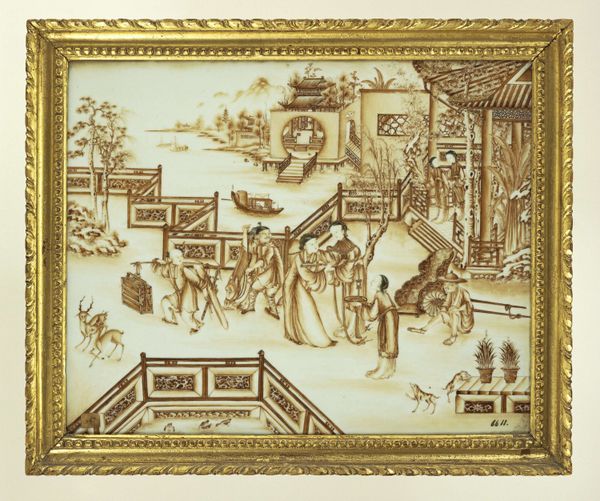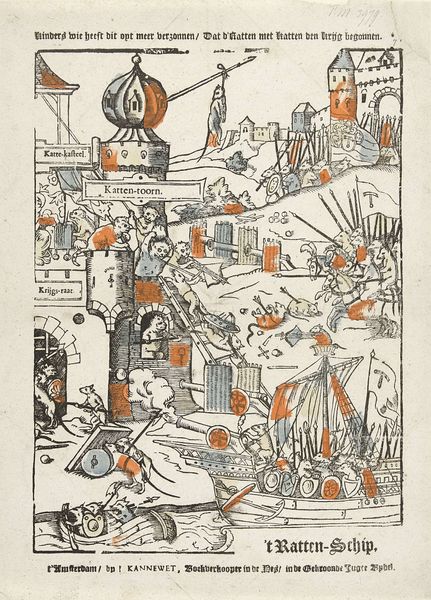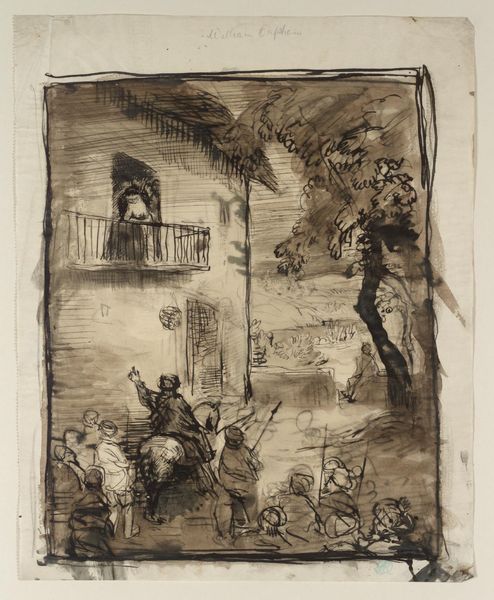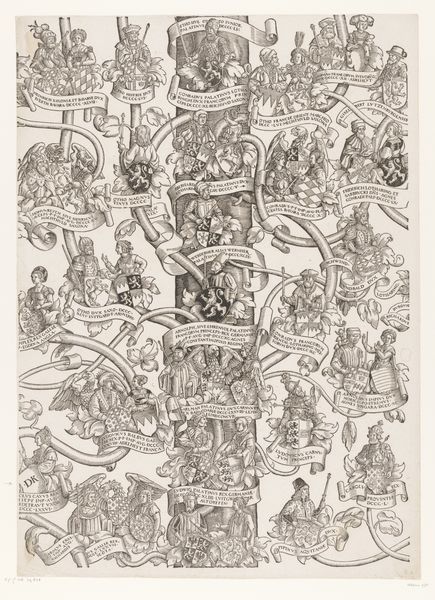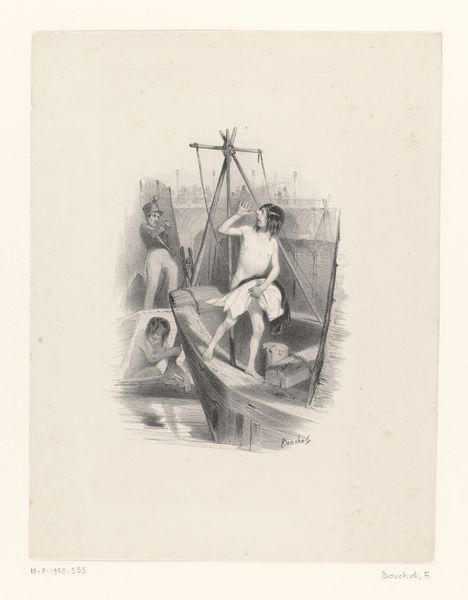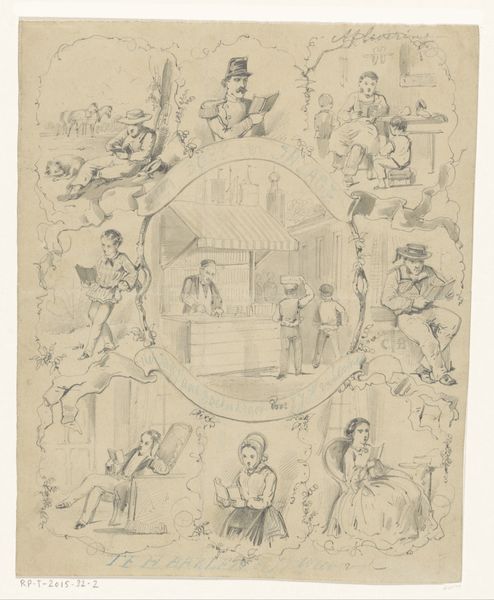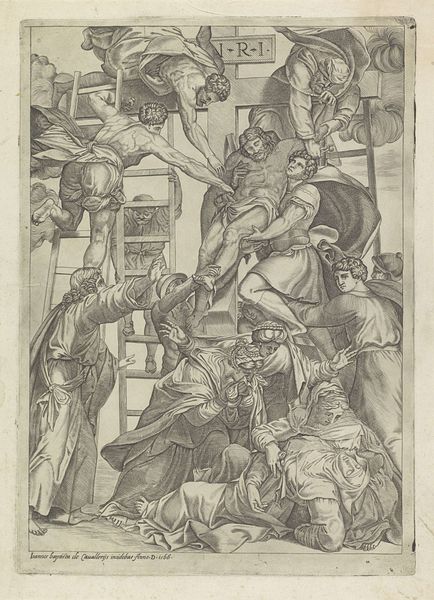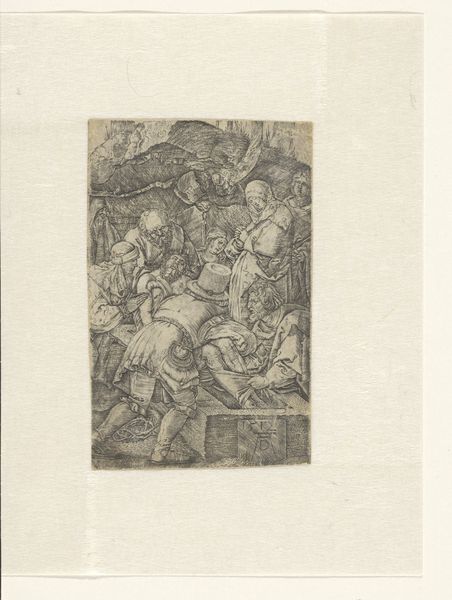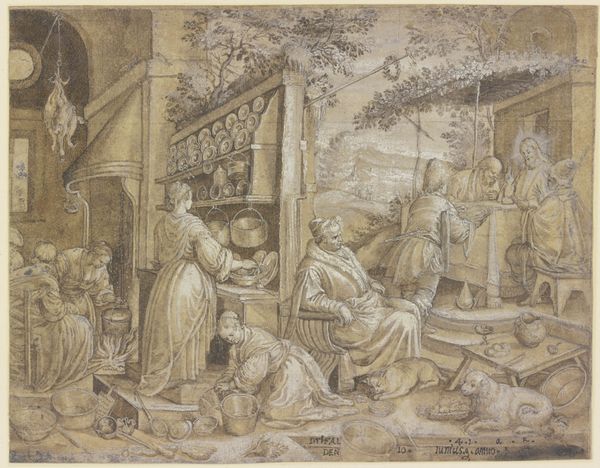
painting, ceramic, earthenware
#
baroque
#
painting
#
landscape
#
ceramic
#
earthenware
#
cityscape
#
genre-painting
Dimensions: height 172 cm, width 145 cm, depth 2.5 cm, height 12.5 cm, width 12.5 cm, depth 1 cm
Copyright: Rijks Museum: Open Domain
Curator: Allow me to introduce this remarkable piece. It’s a Dutch earthenware tile panel dating back to 1707 by W. van der Kloet titled, "Een huis met tussen de ramen het opschrift: ANNO 1707." Quite a mouthful, isn't it? It portrays a lively scene, a snapshot of everyday life rendered in characteristic blue and white. Editor: My first impression is that it feels quite nostalgic. The blue and white immediately calls to mind delftware, conjuring images of quaint Dutch interiors. I’m also drawn to the domestic scene; it feels quite intimate and immediate. Curator: It certainly captures a moment in time. Dutch genre painting from that period often aimed to depict the moral character of everyday life, albeit sometimes subtly. But this tile panel shows figures engaged in seemingly mundane activities around the house. Editor: The imagery is rich with subtle narratives. Note the placement of figures in the landscape, how this arrangement affects how the artwork reflects and reinforces prevailing societal values or gender roles. And then you have the ever present faithful dog, so frequently appearing in such imagery in Dutch Golden Age imagery as symbol of fidelity, always watchful and present. Curator: Exactly. And van der Kloet was a master of visual storytelling, capturing scenes from city life in tile form. Delftware, during this period, was heavily influenced by Chinese porcelain, so there’s a confluence of cultures represented here. Tile panels such as this were used as architectural features to show wealth but it might equally point towards specific cultural aspirations in urban settings. Editor: Indeed, the interplay of East and West is fascinating. This panel isn't just about depicting a house; it’s about projecting an image. But this kind of work speaks more generally about our shared spaces. The house becomes a stage, the tiles, the set. It becomes a shared reality. Curator: That shared reality reflects a rising merchant class. Pieces such as this tilework represent wealth and comfort but, equally, can serve a propaganda purpose or a way to position the commissioner as one who aligns with the contemporary virtues. In this example, though, it's relatively unpretentious. Editor: For me, it's more about evoking this collective memory. The dog, the tea brewing, the gaze of figures onlooking, it becomes part of a collective narrative passed down over time. Curator: Indeed, it shows how domestic settings from the 18th century continue to inform our idea of home. It provides us a moment to think about ourselves, our role and how social order is shaped over generations. Editor: Beautifully said.
Comments
No comments
Be the first to comment and join the conversation on the ultimate creative platform.
